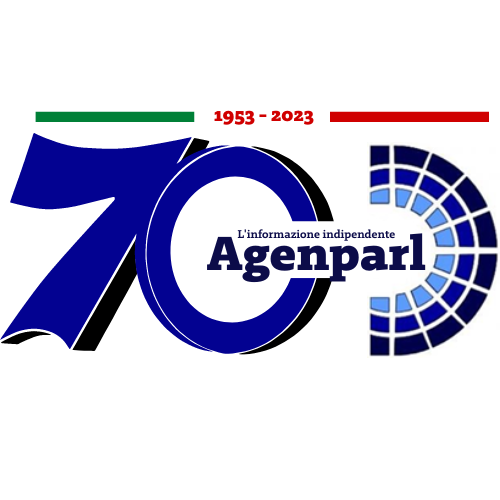 (AGENPARL) - Roma, 31 Maggio 2024
(AGENPARL) - Roma, 31 Maggio 2024(AGENPARL) – ven 31 maggio 2024 A weekly compendium of media reports on science and technology achievements
at Lawrence Livermore National Laboratory. Though the Laboratory reviews
items for overall accuracy, the reporting organizations are responsible for
the content in the links below.
….. LLNL Report, May 24, 2024
Members of the Nimble subcritical experiments team — including staff from
Lawrence Livermore National Laboratory, Los Alamos National Laboratory and
the Nevada National Security Site — gather at the Principal Underground
Laboratory for Subcritical Experimentation (PULSE) facility before execution
of the subcritical experiment on May 14. (Photo: Randy Wong/LLNL)
… Checking a pulse
Lawrence Livermore recently led the successful execution of the first U.S.
subcritical experiment (SCE) since 2021 at the Principal Underground
Laboratory for Subcritical Experimentation (PULSE) facility, formerly known
as the U1a Complex, at the Nevada National Security Site (NNSS). The last
LLNL-led SCE was in February 2019.
The experiment — the first in a series of SCEs named “Nimble” —
involved detonating high explosives nearly 1,000 feet below the desert floor,
allowing researchers to study special nuclear material properties. The Nimble
series will provide key data to support certification efforts within the
stockpile modernization program.
SCEs do not form a self-sustaining, supercritical chain reaction and remain
below the threshold of criticality. The experiment was consistent with the
zero-yield standard of the Comprehensive Nuclear-Test-Ban Treaty.
As the high explosive detonated, experimentalists utilized a complex suite of
state-of-the-art diagnostics to capture comprehensive scientific data.
The SCE was conducted in a mined space at PULSE known as a “zero room”
where SCEs are contained within a robust confinement vessel. This
configuration prevents the release of radiological material and allows the
room to be used again in future experiments.
Read More
Interconnects between chips is a well-known issue in the largest-scale
computations where here tens of thousands of chips have to be wired together.
(Image: Adobe Stock)
… Chipping away at materials science
https://www.discovermagazine.com/technology/giant-chips-boost-supercomputing-capabilities
The ability to simulate the way matter behaves on the atomic scale is
revolutionizing materials science and everything related to it. This approach
is producing new materials with exotic properties, resilient alloys for
nuclear power and a new understanding of protein folding, to name just a few
applications.
These advances are largely the result of ever-more-powerful computing
machines, which aim to make simulations bigger, faster and longer. But,
adding more CPUs doesn’t help much. That’s because the time it takes to
transmit information between these chips is the limiting factor in these
calculations. Adding more chips just makes this bottleneck worse.
That is all changing thanks to the work of Cerebras Systems, a Californian
chip maker, along with scientists from the Sandia, Lawrence Livermore and Los
Alamos national laboratories. This group has found a way to speed up
atomic-scale simulations by two orders of magnitude with results that could
have a transformational impact on materials science.
The time delays introduced by interconnects between chips is a well-known
issue in the largest-scale computations, where tens of thousands of chips
have to be wired together. These chips generally have many cores, each
capable of computing independently of the others. Indeed, high-end desktop
CPUs routinely have dozens of cores. The big advantage is that because the
cores are all carved on the same slab of silicon, they can swap data rapidly.
Read More
https://www.discovermagazine.com/technology/giant-chips-boost-supercomputing-capabilities
Artwork illustrating a new study combining atomistic simulations, machine
learning potential, and data-driven methods to study the chemical speciation
of amorphous carbon nitride using X-ray absorption near-edge structure
(XANES) spectra. (Illustration concept: Wonseok Jeong and Tuan Anh Pham/LLNL;
Illustration: Ella Maru Studios)**
… Machine learning meets X-ray absorption spectroscopy
https://phys.org/news/2024-05-material-characterization-machine-ray-absorption.html
Lawrence Livermore National Laboratory (LLNL) scientists have developed a new
approach that can rapidly predict the structure and chemical composition of
heterogeneous materials.
In a new study, LLNL scientists Wonseok Jeong and Tuan Anh Pham developed an
approach that combines machine learning with X-ray absorption spectroscopy
(XANES) to elucidate the chemical speciation of amorphous carbon nitrides.
The research offers profound new insights into the local atomic structure of
the systems, and in a broader context, represents a critical step in
establishing an automated framework for rapid characterization of
heterogeneous materials with intricate structures.
Unraveling the atomic structure of heterogeneous materials, such as
carbonaceous residues produced from the detonation of high explosives, has
posed a significant challenge to materials scientists. The process is often
labor-intensive, and in many cases, involves the use of empirical parameters.
To address this outstanding challenge, the team’s integrated approach begins
with the development of machine-learning potentials capable of efficiently
exploring the vast configuration space of amorphous carbon nitrides as a
representative system.
Read More
https://phys.org/news/2024-05-material-characterization-machine-ray-absorption.html
A depiction of the collision of two neutrons simulated on a quantum chip at
the Advanced Quantum Testbed. (Image: Sofia Quaglioni/LLNL)
… You say we got a particle evolution
Novel hybrid scheme speeds the way to simulating nuclear reactions on quantum computers
The nuclear reactions that power the stars and& forge the elements emerge
from the interactions of the quantum mechanical neutrons. Explaining these
processes is one of the most challenging unsolved problems in computational
physics. As the mass of the colliding nuclei grows, the resources required to
model them outpace even the most powerful conventional computers.
Quantum computers could perform the necessary computations. However, they
currently fall short of the required number of reliable and long-lived
quantum bits. New research combined conventional computers and quantum
computers to significantly accelerate the prospects of solving this problem.
A team of scientists at the University of Washington, the University of
Trento, the Advanced Quantum Testbed (AQT), and Lawrence Livermore National
Laboratory proposed a hybrid algorithm for the simulation of the (real-time)
dynamics of quantum mechanical systems of particles. In this hybrid approach,
the time evolution of the particles’ spatial coordinates is carried out on
a classical processor, while the evolution of their spin variables is carried
out on quantum hardware.
Read More
Novel hybrid scheme speeds the way to simulating nuclear reactions on quantum computers
A multi-institutional team involving LLNL researchers has successfully
combined an artificial intelligence-backed platform with supercomputing to
redesign and restore the effectiveness of antibodies whose ability to fight
viruses has been compromised by viral evolution. (Graphic: Adam
Connell/LLNL)**
… AI could be the guiding light
https://www.msn.com/en-us/health/medical/team-develops-computational-approach-to-redesign-antibodies-for-broader-effectiveness-against-viral-pandemics/ar-BB1m2TmY
In a new development for addressing future viral pandemics, a
multi-institutional team involving Lawrence Livermore National Laboratory
(LLNL) researchers has successfully combined an artificial intelligence
(AI)-backed platform with supercomputing to redesign and restore the
effectiveness of antibodies whose ability to fight viruses has been
compromised by viral evolution.
The team’s research showcases a novel antibody design platform comprising
experimental data, structural biology, bioinformatics modeling and molecular
simulations, driven by a machine learning algorithm. Their computational
approach has the potential to accelerate the drug development process and
improve pandemic preparedness significantly.
The work was completed within the GUIDE program, one of LLNL’s largest
strategic partnerships with the Department of Defense.
Read More
https://www.msn.com/en-us/health/medical/team-develops-computational-approach-to-redesign-antibodies-for-broader-effectiveness-against-viral-pandemics/ar-BB1m2TmY
——————————————————————————
Founded in 1952, Lawrence Livermore National Laboratory https://www.llnl.gov
provides solutions to our nation’s most important national security
challenges through innovative science, engineering and technology. Lawrence
Livermore National Laboratory is managed by Lawrence Livermore National
Security, LLC for the U.S. Department of Energy’s National Nuclear Security
Administration.
Read previous Lab Report articles online https://www.llnl.gov/news/lab-report
— Unsubscribe from this newsletter :
